GIRLS IN BOYS’ CARS EDUCATION RESOURCE
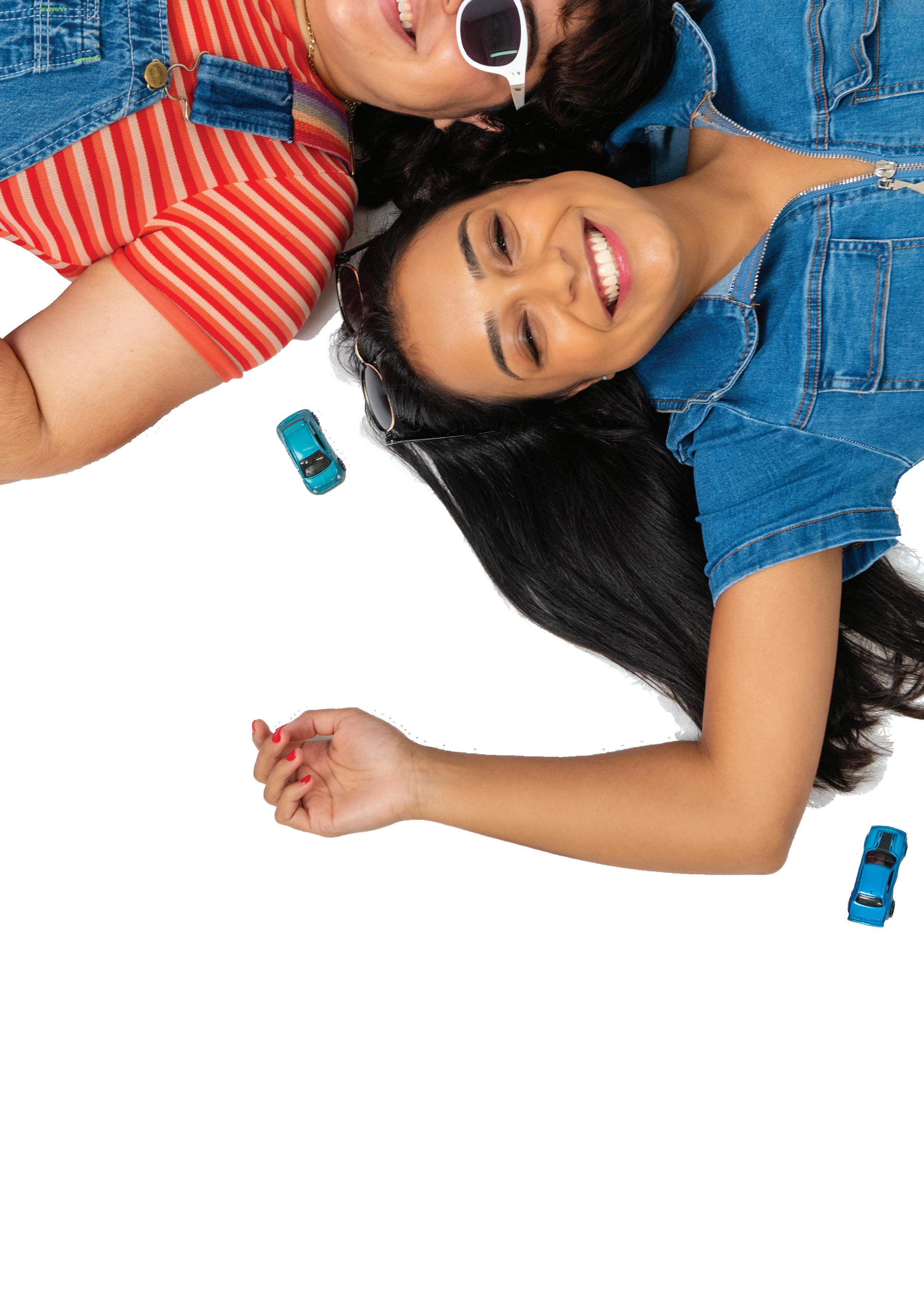

SECTION 1 ABOUT THE PRODUCTION
a Title and synopsis
b Complete Cast and Crew list with roles
c Character descriptions
d A Note from the Writer
SECTION 2 CURRICULUM LINKS
SECTION 3 BEHIND THE SCENES
a Director and Adapter Interview
b Lighting Designer Interview
c Multimedia Designer Interview
d Costume and set sketches
SECTION 4 CLASSROOM ACTIVITIES
a Pre Performance Activities
b Creative Writing Prompts
c Drama Activities
CONTENTS INTRODUCTION
These teacher’s notes have been designed to assist you with curriculum-based learning activities in relation to the performance of Girls in Boys’ Cars by Felicity Castagna, Adapted and Directed by Priscilla Jackman, for National Theatre of Parramatta. We hope the resource will assist your students to further enjoy and enhance their performing arts experience back in the classroom.
The activities are designed for students in years 9-12. NSW Board of Studies has been used as guides for planning them, however you should adapt each one to suit the stage of your class as well as the curriculum focus, and outcomes used in your school. Some websites are suggested within the resource, we recommend that you visit the sites and assess the suitability of the content for your particular school environment before using them.
2
SECTION 1


ABOUT THE PRODUCTION
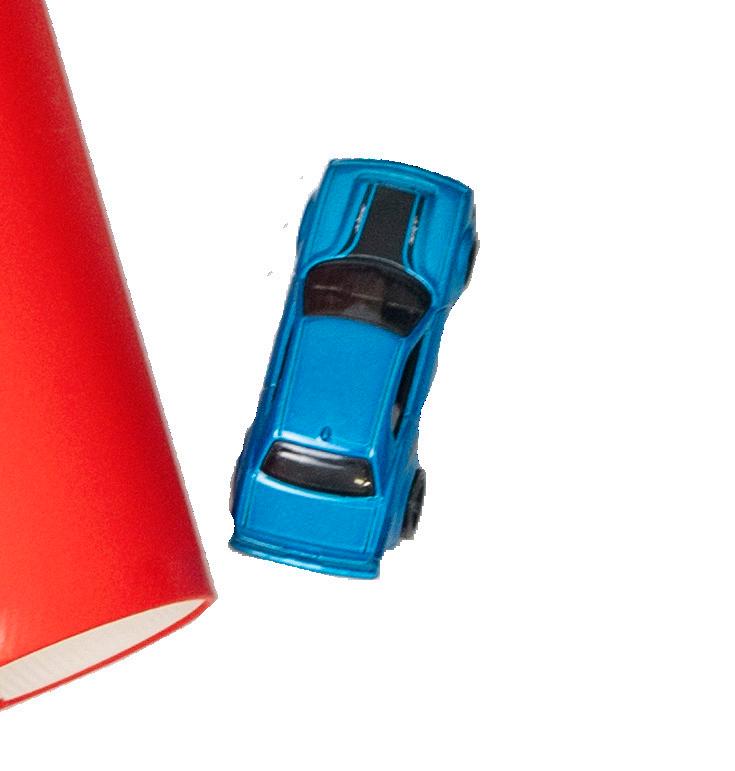
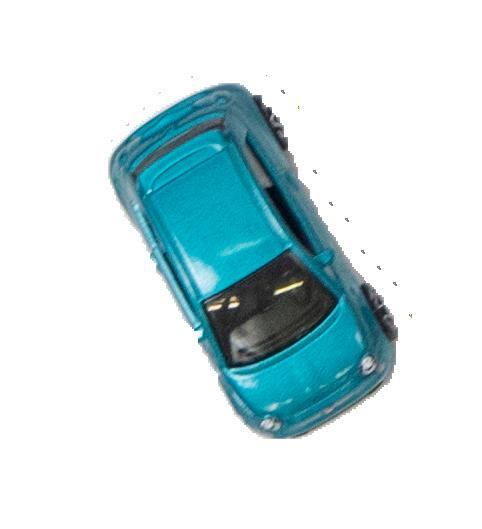
GIRLS IN BOYS’ CARS
BY FELICITY CASTAGNA
ADAPTED
AND DIRECTED BY
PRISCILLA JACKMAN
A complicated friendship. A journey they didn’t intend to happen.
Asheeka and Rosa are two funny, sharp, adventurous young women who refuse to be held back any longer.
When they end up on a Thelma and Louise-esque road trip in Western Sydney, a series of escalating events land Rosa in juvenile jail living her life through books and wondering about her best mate, who has disappeared.
Based on Western Sydney author Felicity Castagna’s award-winning novel.
4 SECTION 1: ABOUT THE PRODUCTION
B. CHARACTERS
ROSA
17 years. Australian of Italian/Greek heritage. Self-depreciating, socially awkward, intellectually curious and more capable than she gives herself credit for. Under pressure, Rosa can be defensive. She has an active imagination that is often masked by her lack of self-confidence.
ASHEEKA
17 years. Australian of Fiji Indian heritage. Asheeka works hard to appear sophisticated, in control, and sexually self-assured. Internally she rarely feels any of these. Not always able to clearly express herself, Asheeka has a yearning to break free from the social and cultural pressures she feels compelled to uphold as a young Australian woman in Parramatta, particularly due to the expectations of her mother and boyfriend Arnold.
5 SECTION 1: ABOUT THE PRODUCTION
C. CAST AND CREATIVES
SUZ MAWER


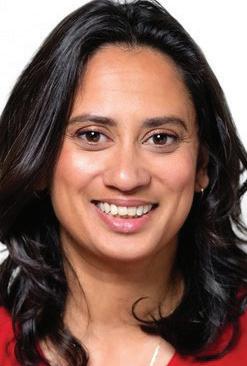
Ensemble
ELLA PRINCE Ensemble

ALEX STAMELL Ensemble
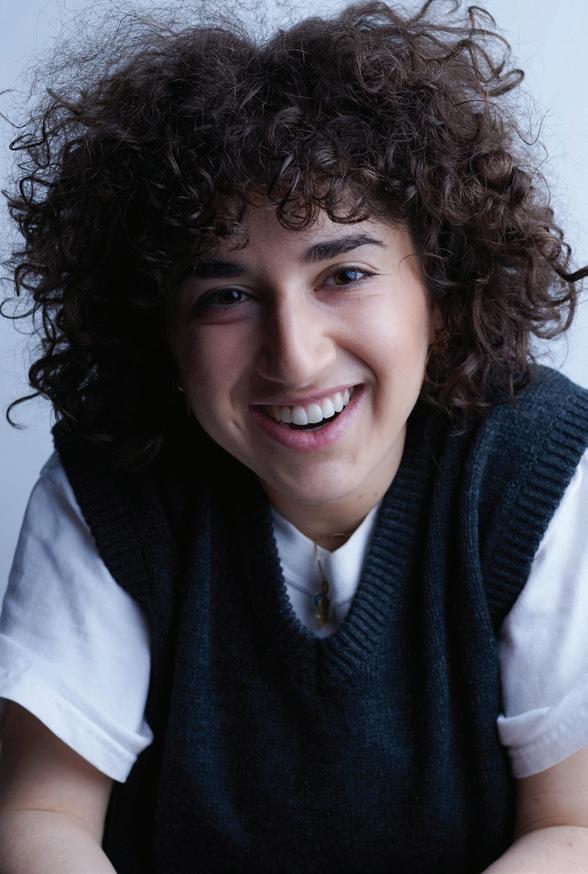
6
ZIGGY RESNICK Rosa NIKITA WALDRON Asheeka
SECTION 1: ABOUT
PRODUCTION
THE
C. CAST AND CREATIVES
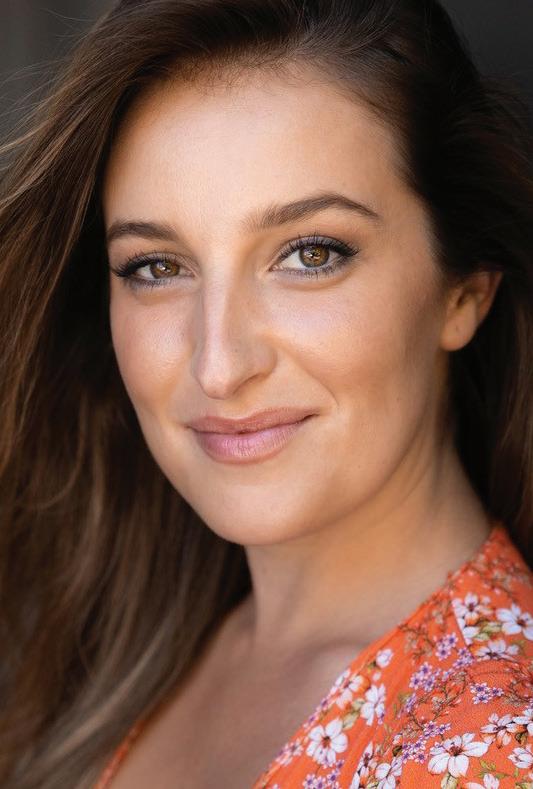







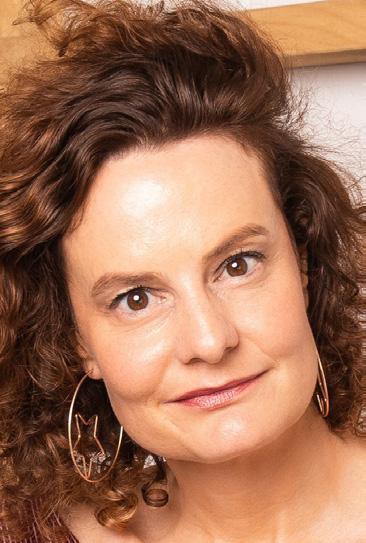
7
FELICITY CASTAGNA Writer
MELANIE LIERTZ Production Designer
TIM DASHWOOD Fight and Movement Director
BRITTANIE SHIPWAY Dramaturg
MARK BOLOTIN Multimedia Designer
ZAC SARIC Sound Designer
PRISCILLA JACKMAN Director and Adaptor
LUCY CLEMENTS Associate Director
SECTION 1: ABOUT THE PRODUCTION
MORGAN MORONEY Lighting Designer
D. A NOTE FROM THE WRITER - FELICITY CASTAGNA

Writer Motivation
I always liked road stories but I’ve also always thought of them as something that are inherently male: Stories like On The Road where men go on this hero’s quest and find themselves. In female road stories women don’t get the luxury of deciding to go on a journey, they are always forced to run, they are always jumping off cliffs. In this book I was interested in what might happen if young women get to drive the car. I’m interested in what the consequences of that freedom might be and I’m interested in how that journey will differ for a pair of frenemies who come from the same community but different worlds.
Writer Background
Felicity Castagna’s first novel for Young Adults, The Incredible Here and Now, received The Prime Minister’s Award for Literature, was named the IBBY Honour Book for Australia and was a finalist for the CBCA Book of The Year for Older Readers. Her third book, No More Boats, was a finalist in The Miles Franklin, The Voss Prize, The NSW Premier’s Literary Awards and has been published internationally. Her latest book, Girls In Boys’ Cars received The Queensland and Victorian Premier’s Awards and was an Hour Book for the CBCA. It is now being adapted to stage and screen.
Felicity has written for the stage and radio and her essays frequently appear in magazines, journals and newspapers. She also loves creating cross-artform collaborative work with other artists and has made a lot of wild big things that have premiered at The Sydney Festival and The Museum of Contemporary Art’s C3 West program among other places. She is a lecturer in Creative Writing at The Writing and Society Research Centre at Western Sydney University. She has helped to run a lot of storytelling projects, makes collaborative and complex stories with The Finishing School Collective and talks about writing and books in many different places including multiple arts programs for ABC Radio National and television.
8
SECTION 1: ABOUT THE PRODUCTION
SECTION 2



CURRICULUM LINKS

9
DRAMA
STAGE CONTENT OBJECTIVES OUTCOMES
Stage 5 Dramatic Forms and Styles: Contemporary Australian Theatre; Book Adaptation; Women in Theatre
Making
5.1.1 manipulates the elements of drama to create belief, clarity and tension in character, role, situation and action
5.1.4 explores, structures and refines ideas using dramatic forms, performance styles, dramatic techniques, theatrical conventions and technologies.
Performing
5.2.2 selects and uses performance spaces, theatre conventions and production elements appropriate to purpose and audience
5.2.3 employs a variety of dramatic forms, performance styles, dramatic techniques, theatrical conventions and technologies to create dramatic meaning.
Appreciating
5.3.1 responds to, reflects on and evaluates elements of drama, dramatic forms, performance styles, dramatic techniques and theatrical conventions
5.3.2 analyses the contemporary and historical contexts of drama
5.3.3 analyses and evaluates the contribution of individuals and groups to processes and performances in drama using relevant drama concepts and terminology.
10
SECTION 2: CURRICULUM LINKS
STAGE CONTENT OBJECTIVES OUTCOMES
Stage 6Preliminary Theatrical Traditions and Performance Styles: Contemporary Australian Theatre; Women in Theatre
Performing P2.2 understands the contributions to a production of the playwright, director, dramaturg, designers, frontof-house staff, technical staff and producers
P2.6 appreciates the variety of styles, structures and techniques that can be used in making and shaping a performance
Critically Studying P3.2 understands the variety of influences that have impacted upon drama and theatre performance styles, structures and techniques
P3.3 analyses and synthesises research and experiences of dramatic and theatrical styles, traditions and movements
P3.4 appreciates the contribution that drama and theatre make to Australian and other societies by raising awareness and expressing ideas about issues of interest
Stage 6 - HSC Australian Drama and Theatre: Contemporary Australian Theatre Practice; The Voice of Women in Theatre (topic relevance - not prescribed text)
Making H1.3 uses knowledge and experience of dramatic and theatrical forms, styles and theories to inform and enhance individual and group devised works
Performing H2.2 uses dramatic and theatrical elements effectively to engage an audience
H2.4 appreciates the dynamics of drama as a performing art
11 SECTION 2: CURRICULUM LINKS
STAGE CONTENT OBJECTIVES OUTCOMES
Stage 6 - HSC Australian Drama and Theatre: Contemporary Australian Theatre Practice; The Voice of Women in Theatre (topic relevance - not prescribed text)
ENGLISH
Critically Studying H3.1 critically applies understanding of the cultural, historical and political contexts that have influenced specific drama and theatre practitioners, styles and movements
H3.3 demonstrates understanding of the actoraudience relationship in various dramatic and theatrical styles and movements
H3.5 appreciates the role of the audience in various dramatic and theatrical styles and movements
STAGE CONTENT OBJECTIVES OUTCOMES
Stage 5 Text type: Drama; Fiction.
A wide range of cultural, social and gender perspectives, popular and youth cultures.
Objective A: communicate through speaking, listening, reading, writing, viewing and representing
Objective B: use language to shape and make meaning according to purpose, audience and context
Objective C: think in ways that are imaginative, creative, interpretive and critical
EN5-1A: A student responds to and composes increasingly sophisticated and sustained texts for understanding, interpretation, critical analysis, imaginative expression and pleasure
EN5-3B: A student uses and describes language forms, features and structures of texts appropriate to a range of purposes, audiences and contexts
EN5-5C: A student thinks imaginatively, creatively, interpretively and critically about information and increasingly complex ideas and arguments to respond to and compose texts in a range of contexts
12 SECTION 2: CURRICULUM LINKS
STAGE CONTENT OBJECTIVES OUTCOMES
Stage 5 Text type: Drama; Fiction.
A wide range of cultural, social and gender perspectives, popular and youth cultures.
Objective D: express themselves and their relationships with others and their world
ENGLISH STANDARD
EN5-7D: A student understands and evaluates the diverse ways texts can represent personal and public worlds
EN5-8D: A student questions, challenges and evaluates cultural assumptions in texts and their effects on meaning
STAGE CONTENT OBJECTIVES OUTCOMES
Year 12
Common Module: Texts and Human Experiences; (related text)
Module A: Language, identity and Culture (related text)
Objective A: communicate through speaking, listening, reading, writing, viewing and representing
Objective C: think in ways that are imaginative, creative, interpretive and critical
EN12-1 independently responds to and composes complex texts for understanding, interpretation, critical analysis, imaginative expression and pleasure
EN12-5 thinks imaginatively, creatively, interpretively, analytically and discerningly to respond to and compose texts that include considered and detailed information, ideas and arguments
EN12-6 investigates and explains the relationships between texts
Objective D: express themselves and their relationships with others and their world
EN12-7 explains and evaluates the diverse ways texts can represent personal and public worlds
EN12-8 explains and assesses cultural assumptions in texts and their effects on meaning
13 SECTION 2: CURRICULUM LINKS
ENGLISH ADVANCED
STAGE CONTENT OBJECTIVES OUTCOMES
Year 11 Module A: Narratives that Shape our World
Objective A: communicate through speaking, listening, reading, writing, viewing and representing
EA11-1 responds to, composes and evaluates complex texts for understanding, interpretation, critical analysis, imaginative expression and pleasure
EA11-2 uses and evaluates processes, skills and knowledge required to effectively respond to and compose texts in different modes, media and technologies
Objective C: think in ways that are imaginative, creative, interpretive and critical
EAL11-5 thinks imaginatively, creatively, interpretively and critically to respond to, evaluate and compose texts that synthesise complex information, ideas and arguments
EAL11-6 investigates and evaluates the relationships between texts
Objective D: express themselves and their relationships with others and their world
EAL11-7 evaluates the diverse ways texts can represent personal and public worlds and recognises how they are valued
EAL11-8 explains and evaluates cultural assumptions and values in texts and their effects on meaning
Year 12
Common Module: Texts and Human Experiences (related text)
Objective A: communicate through speaking, listening, reading, writing, viewing and representing
EA12-1 independently responds to, composes and evaluates a range of complex texts for understanding, interpretation, critical analysis, imaginative expression and pleasure
EA12-2 uses, evaluates and justifies processes, skills and knowledge required to effectively respond to and compose texts in different modes, media and technologies
14 SECTION 2: CURRICULUM LINKS
STAGE CONTENT OBJECTIVES OUTCOMES
Year 12
Common Module: Texts and Human Experiences (related text)
PDHPE
Objective B: use language to shape and make meaning according to purpose, audience and context
Objective C: think in ways that are imaginative, creative, interpretive and critical
EA12-3 critically analyses and uses language forms, features and structures of texts justifying appropriateness for specific purposes, audiences and contexts and evaluates their effects on meaning
EA12-5 thinks imaginatively, creatively, interpretively, critically and discerningly to respond to, evaluate and compose texts that synthesise complex information, ideas and arguments
EA12-6 investigates and evaluates the relationships between texts
STAGE CONTENT OBJECTIVES OUTCOMES
Stage 5 Health, Wellbeing and Relationships demonstrate an understanding of strategies that promote a sense of personal identity and build resilience and respectful relationships
PD5-1 assesses their own and others’ capacity to reflect on and respond positively to challenges
PD5-3 analyses factors and strategies that enhance inclusivity, equality and respectful relationships
15 SECTION 2: CURRICULUM LINKS
SECTION

3



BEHIND THE SCENES
16
A. DIRECTOR & ADAPTOR INTERVIEW INTERVIEW WITH PRISCILLA JACKMAN
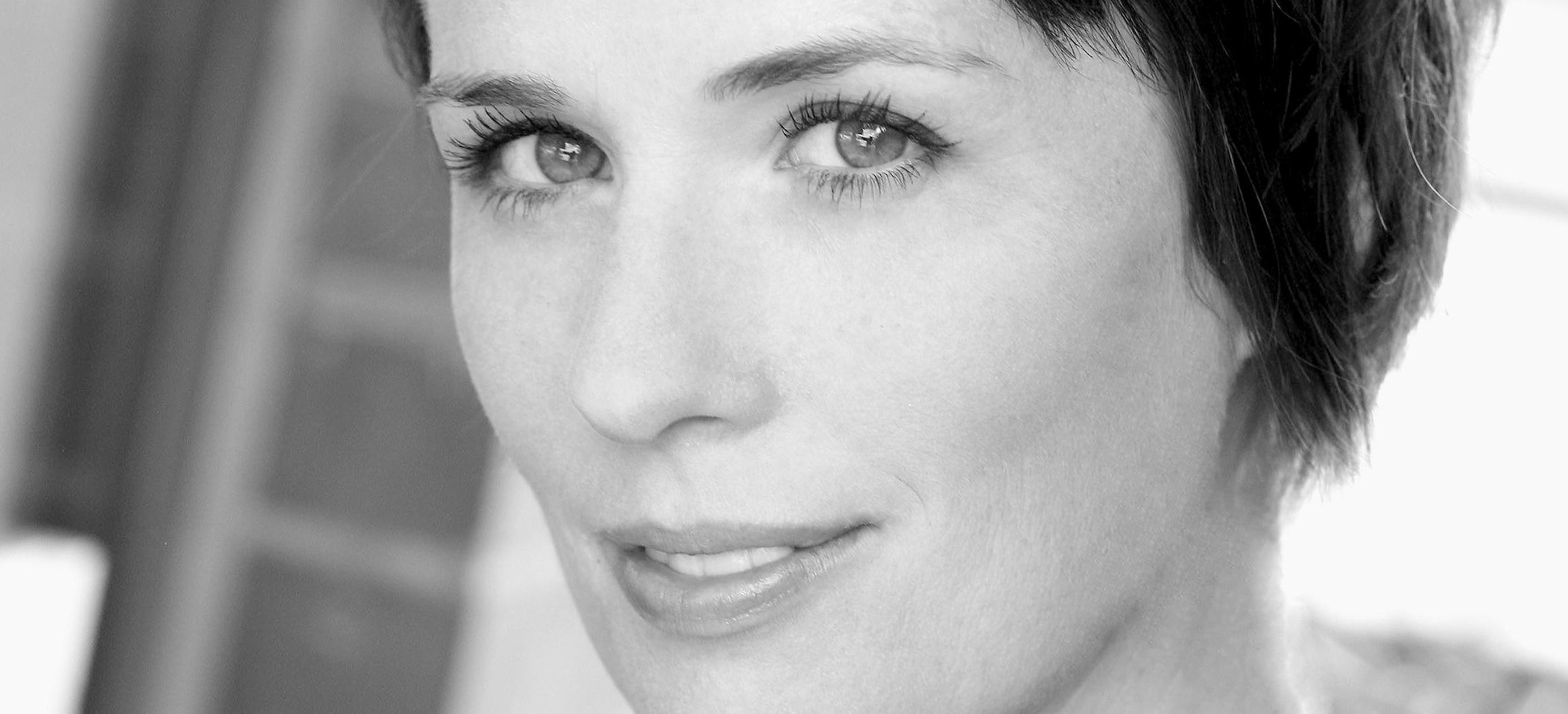
What attracted you to adapting Felicity’s novel?
My family live in Parramatta so I know the area very well and I loved reading a book that was so much about our local area. I loved the complexity and ‘realness’ of the relationship between Rosa and Asheeka which really resonated with me, particularly reminding me of my best friend around that time.
How long did it take you to write Girls In Boys’ Cars for the stage?
It has been quite a long process. The first draft took about three or four months. From then I have done a number of drafts and rewrites. We had one script development which was very useful and the process of refining and redrafting will continue into the rehearsal period.
What is your directing process? How do you realise the story from page to stage?
I start by breaking down the script and engage in visualisation processes, imagining how the story might be told
visually in the space. I work with my creative team - set and costume designer, AV designer, sound and lighting designer to develop our ‘world’. And then start by looking at the key moments and imagining how all the different production values, and actors in space can work together to create meaning for the audience to not only communicate the story, but to express the emotional and dramatic journey of the work.
What advice would you give a young person looking to become a Director?
See as much theatre as you possibly can. Join drama groups, and take drama at high school. There are lots of very good drama schools and university courses that you can attend to train as a director professionally. Research all of these, and don’t be afraid to travel to a new city to immerse yourself in your education in the Arts. Life, travel and seeing everything you possibly can, engaging with as much live performance as possible will help you develop your craft and aesthetic.
B. LIGHTING DESIGNER INTERVIEW INTERVIEW WITH MORGAN MORONEY

Tell us a little about your career trajectory as a Lighting Designer
The launching pad for my professional career was studying at NIDA – my final show there earned me the Australian Production Design Guild’s Emerging Designer for Live Performance award soon after I graduated.
Since then, I’ve been very fortunate to work completely freelance as a designer, working for companies like Opera Australia, Ensemble Theatre, National Theatre of Parramatta, ATYP, and extensively in the independent theatre sector.
What is your design process?
Each design process is different, and varies greatly whether you’re working on a theatre piece, opera, dance work or installation, whether it’s a new work or a remount, what kind of theatre it’s in - or whether it’s in a theatre at all! That’s part of what makes it so exciting.
What is common to all these processes is a deep interrogation of a work’s ‘text’ – whether that be words in a script, a score, libretto, or choreography. I read and analyse the text in great detail to formulate ideas in the specific context of our creative team’s production, with a given company, in a given theatre.
I then begin searching for visual stimulus and inspiration to bring to the creative team. I spend time researching, in galleries, at installation work and watching films, gathering visual material and references for projects. I bring this to the team to start communicating ideas and formulating our visual language together.
Once the conceptual stage starts to be formed into a tangible physical reality, within the constraints of budget, time and resources available, my work accelerates towards opening night. In rehearsals, I watch the piece take shape with the performers, and around this point produce
18
SECTION 3: BEHIND THE SCENES
a technical drawing called a Lighting Plan to translate my ideas into technical concepts and communicate with the technical team who will install the design as per my specifications.
In the Production Week, I spend an intensive few days (and nights) bringing the design to life in the theatre, with all the other elements of the performance, which is usually an intensive and exciting rush towards the finish line.
Where did you look for inspiration for lighting on Girls In Boys’ Cars?
Girls in Boys’ Cars is a delicious challenge for a designer. It is a story of epic proportions, taking place across a dizzying number of locations - from urban Parramatta to remote Jindabyne – in places of physical and psychological confinement vs. expansiveness. It exists distinctly through Rosa’s eyes, drifting in and out of memories, reflections, and ruminations on storytelling itself as we uncover her story. It is a story of nearconstant motion, and the design has evolved in response to this – it’s developed to be able to conjure images and locations
quickly and efficiently, taking the audience on this rapid journey. It’s also a unique and really integrated collaborative effort with our Video Designer to create a cohesive world, which is really exciting.
What do you enjoy most about working as a Lighting Designer?
I enjoy the process of bringing stories to life onstage, and the moments I get to hear an audience gasp in delight as something unexpected and thrilling unfolds in front of them.
What advice would you give a young person looking to become a Lighting Designer?
Absorb as much art as you can –everything you consume helps define your taste and aesthetic. Get involved in any kind of theatre, everyone you meet can help you to learn something new or meet another person in the industry.
19 SECTION 3: BEHIND THE SCENES
B. MULTIMEDIA DESIGNER INTERVIEW
INTERVIEW WITH MARK BOLOTIN

What is your design process?
As a multimedia designer, I start by first reading the text super carefully and seeing what images come to my mind... then chatting with the director and seeing what kind of visual world they are imagining and looking to create. From there I begin doing sketches - doodles really - in a notebook and looking at all sorts of images and films for inspiration. The design starts to take more shape in conversation with the set designer, lighting designer and director when we start to play with how the visuals might look in space (the model box) and across time (the scenes). Finally, I would go out and film or sample visuals and images that could be used during the show and start doing test projections with them.
What excites you about this production?
Firstly, it’s working with a great team to bring this novel to the stage. Multimedia design is only as good as the rest of the team’s inputs, its a very synergetic medium.
This production is also particularly exciting as it has a strong multimedia riddle at the heart of it - how do you convey motion, car chases, kinetic action on a fixed stage? I am excited that the multimedia design can be a part of this solution by playing with ideas of speed and stillness, motion blur, kinetic streaks, things speeding past at one moment and then completely still the next.
What did you draw on for inspiration for Girls In Boys’ Cars?
The first source of inspiration is always the visual clues woven into the text, especially in a book like this one with so many strikingly visual scenes and settings. From there I drew on inspiration from 60s roadtrip movies, 8mm home videos and anime for the kinetic moments in the show and the works of visual artists such as Bill Viola for the large-scale immersive moments.
20
What type of projects do you most enjoy working on?
I most enjoy working on projects such as this one that explore visuals and multimedia in a new, challenging or unique way - something more than just putting a big screen at the back of the stage. Every project has its challenges and delights but the ones where the multimedia is fused into the work in a truly meaningful way and integrates seamlessly with the lighting, set design and direction - those are the projects to truly cherish!
What advice would you give a young person looking to get into multimedia design?
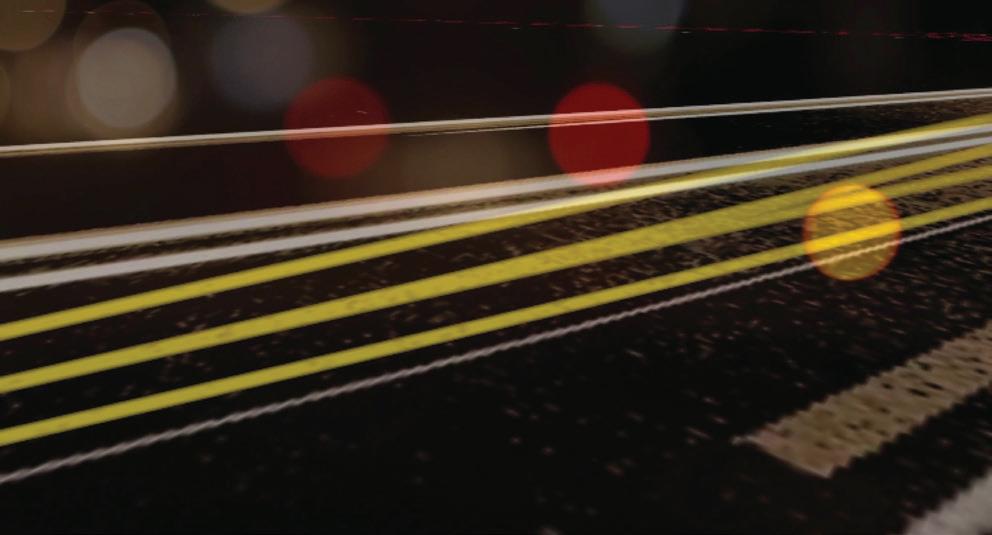
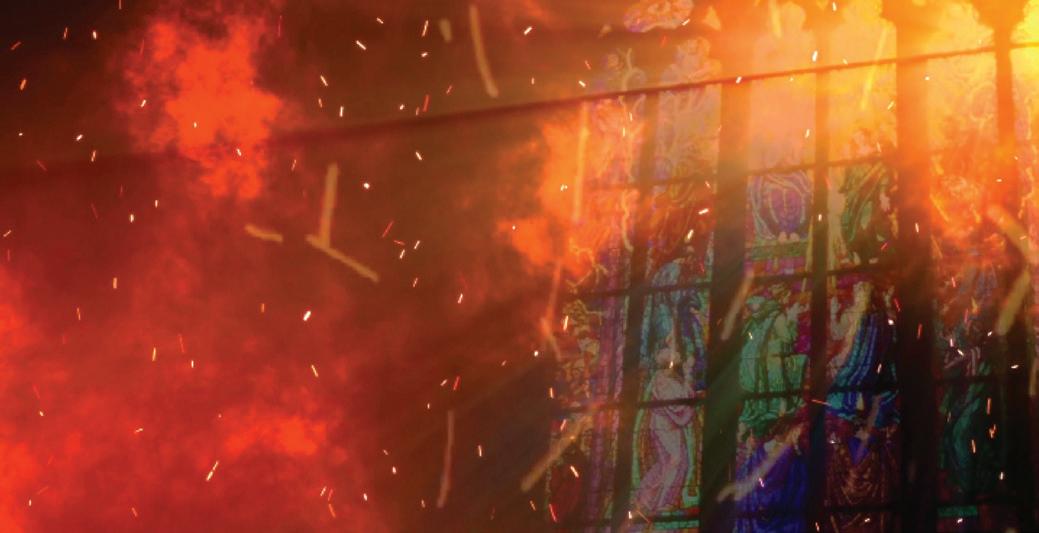
Multimedia design is an extraordinary world where you can achieve powerful effects and transform realities relatively easily - with a projector or two. I would encourage anyone interested in multimedia design to first and foremost absorb as much cinema, art, design as they can - you never know when something will subliminally or consciously bubble up for your designs. Secondly, I would then encourage grabbing or hiring a cheap projector and just playing with the idea of cinema or images in physical space, projected onto screens, people or objects. What does a table look like with a projection of a forest on it? How can you transform a curtain into a waterfall?
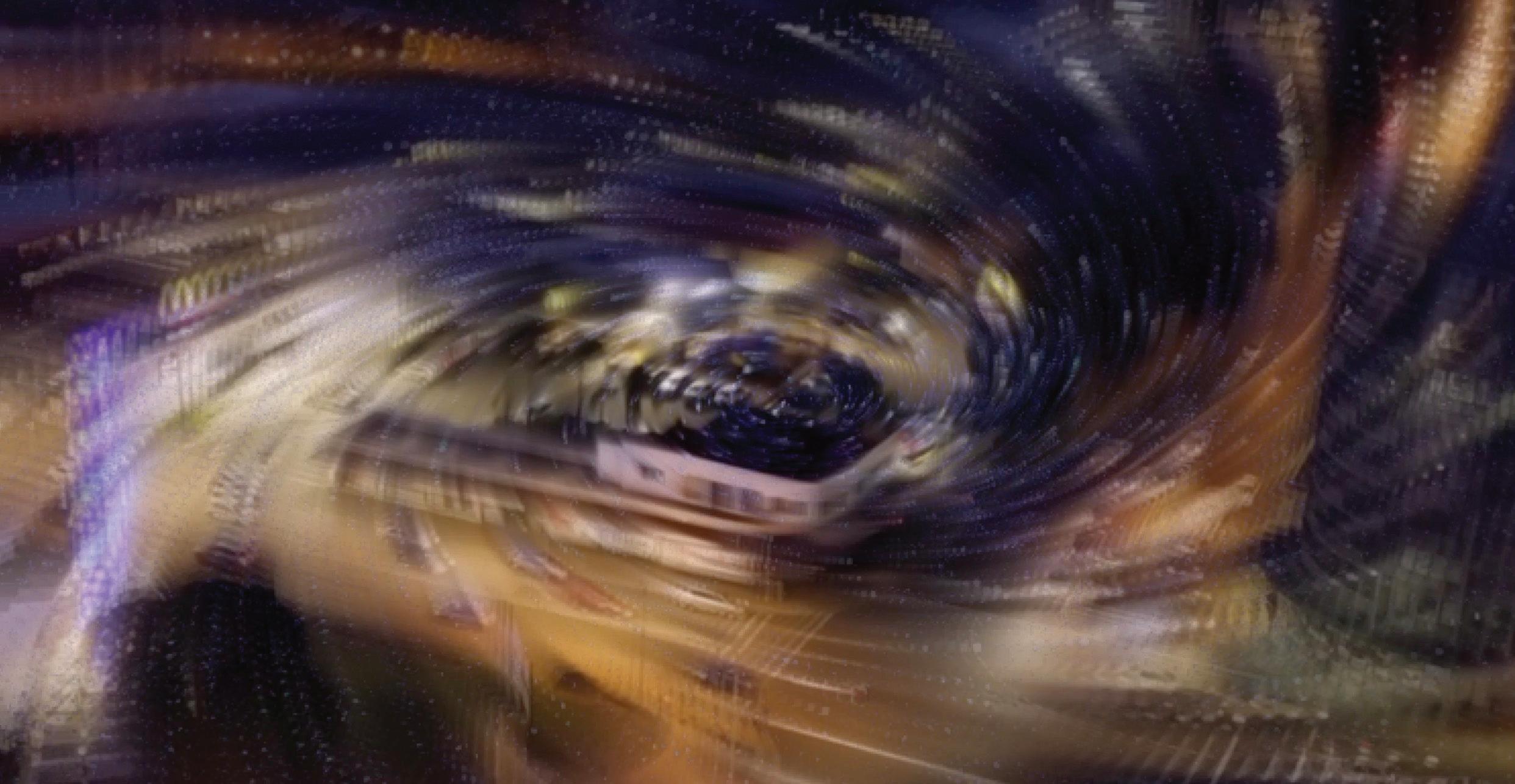
MARK’S MOOD BOARD
21
INSPO IMAGES


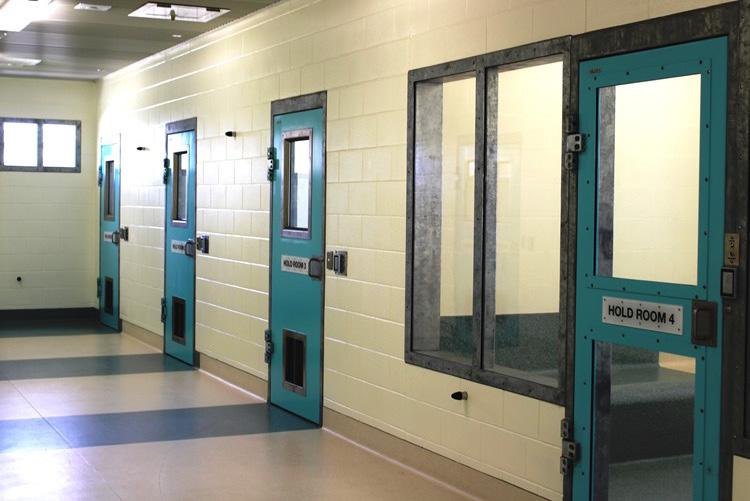
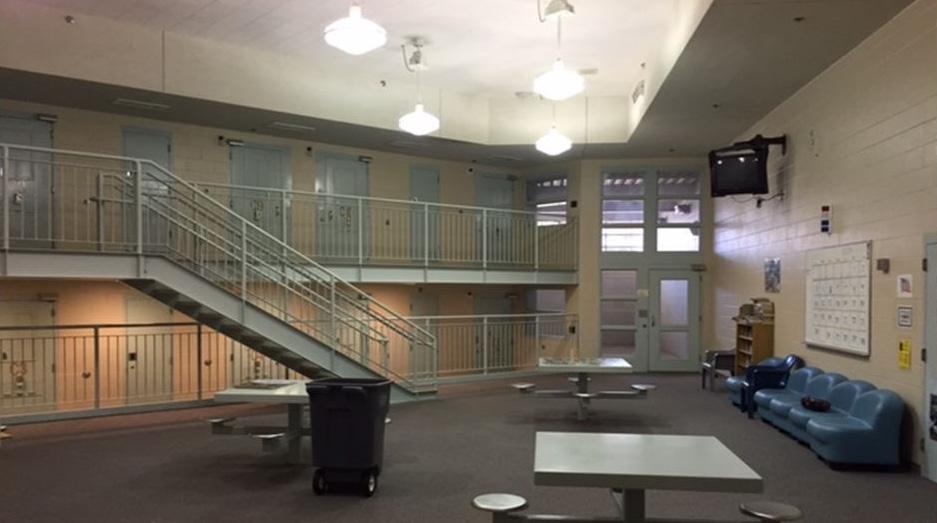
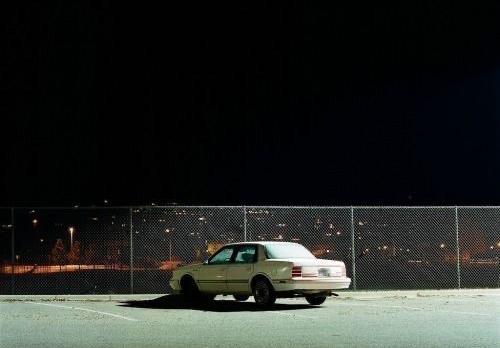
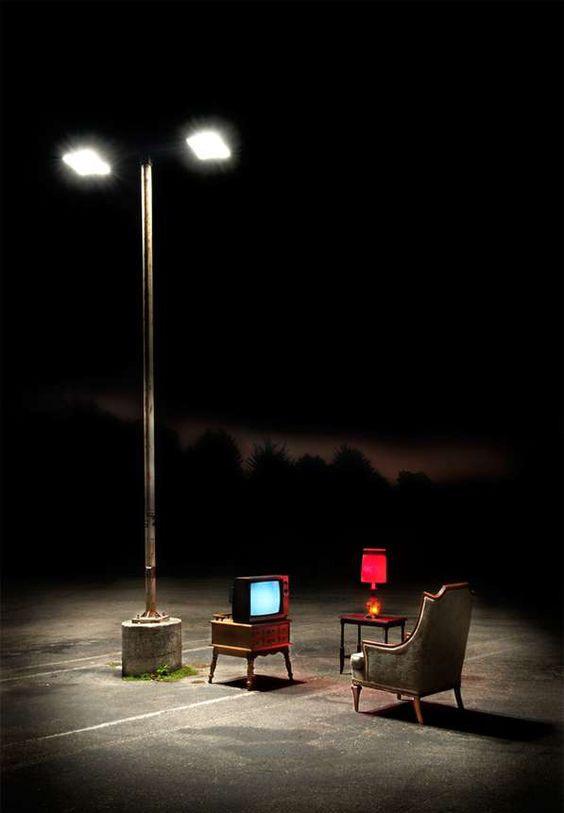
22 SECTION 3: BEHIND THE SCENES

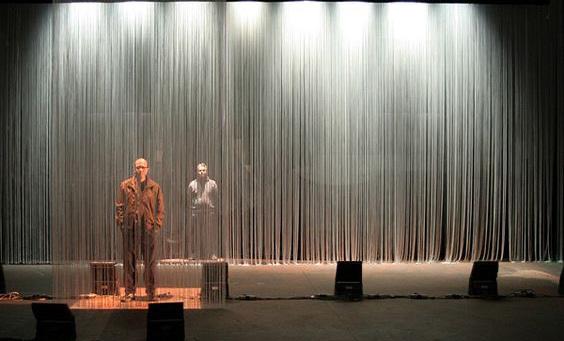

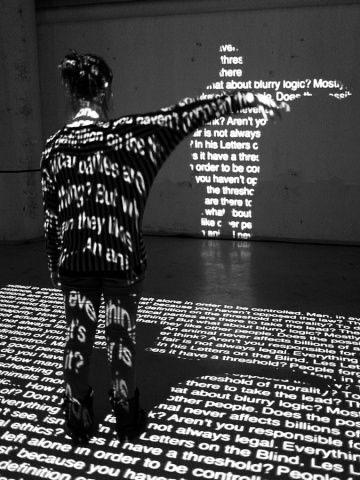


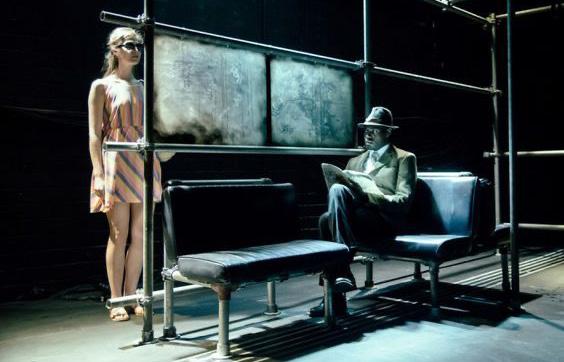

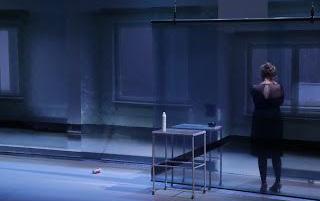
23 SECTION 3: BEHIND THE SCENES
SECTION 3

CLASSROOM ACTIVITIES



24
SYNOPSIS
Girls In Boys’ Cars is a book about two girls named Rosa and Asheeka who end up stealing a car on a whim from Asheeka’s boyfriend to get him and all the other boys back for the way they treat the girls in the neighborhood. Rosa and Asheeka are sick of everything really. They’re sick of the suburbs and spending their weekends hanging in the parking lot of McDonald’s and they are sick of the kinds of girls that their families and schools and boys and communities expect them to be so they take off and find themselves in even more trouble than they were in before they left.
It’s summer. Bushfire season. The worst fire season in Australia’s history and Rosa and Asheeka drive right out of the hustle and bustle of the western suburbs and into a regional Australia that’s as foreign to them as another planet and those fires just keep on coming.
At the start of the novel Asheeka is missing and Rosa’s looking back on all the things they got up to that summer from her cell in a juvenile jail. Does Rosa regret all those things she did out there on the road? Not really, but juvenile jail is a place where all the girls are being told a lot about the things they should have done in the past while they’re trying to dream up their futures.
Girls in Boys’ Cars is a literary page turner about a complicated friendship, the stories that define us and two funny, sharp young women who don’t want to be held down any longer.
THEMES OF THE TEXT INCLUDE; How can we own and tell our own stories?
The novel strongly employs metafiction and intertextuality to discuss the different narrative strategies that writers use in order to tell a story. Furthermore it poses questions about how the stories we read might influence our sense of self and how we can try to articulate our own stories in a world in which social media and societal expectations makes it difficult, particularly for girls, to convey an authentic sense of themselves.
The clash of urban and regional Australian cultures.
Through the device of two very urban girls driving through regional Australia this book highlights many ways that we experience our country very differently depending on where we live. In particular, the book explores ways that climate change and environmental catastrophes like fire have a more immediate and dramatic impact on regional communities, something that isn’t well understood by urban young people.
Writing Style
Girls In Boys’ Cars is a story within a story. The narrative frame is told in the present day in which Rosa is in juvenile jail trying to work out the best way of telling the story of how she got there. Nestled within this outer frame is the story of being on the road. Rosa can only begin to tell her own story through considering the many other books she has read and using them as a way to explore her own environment and situation, books such as The Magic Faraway Tree series, The Road, Women Warrior, 1001 Nights, The Invisible Girl comic book series and The Man From Snowy River.
25 SECTION 3: CLASSROOM
ACTIVITIES
STUDY NOTES AND ACTIVITIES
WHERE DO YOU COME FROM?
Discussion
What are the places that shape Rosa and Asheeka in their local communities? How do these places shape who they are and what they do in both explicit and implicit ways? What are some of the things they find surprising, strange and intriguing about regional Australia?
Activity
1. Students draw a map of their community as they see it. The map does not need to be geographically accurate. It just needs to highlight the spaces that are significant to them. Students write a short label for each place explaining why it is important to them.
2. Students study one small scene of Asheeka and/or Rosa in their local spaces from the first few chapters of the book. Students discuss the questions, what is happening here? How does it show Rosa and/or Asheeka’s relationship with their place? Stories are made out of small moments of time where something literal happens that has a deeper meaning for the characters. Students go back to their maps and identify a small moment in time that happened in one of the places. Students write down, what was the deeper meaning? How does it show their relationship to place and community?
Discussion
Great creative writing isn’t about using many adjectives or all five senses. Less experienced writers tend to overwrite, rather than making sure that every detail tells us something really specific about who the character is and what issues are being explored in the text. Great writing is all about choosing the most specific details possible.
Activity
The teacher chooses a scene from the book or the play and asks the students to highlight which details pop out as being the most specific. The teacher then leads a discussion on why these details are effective and what they show us about the character and the situation they find themselves in. The students then create a word pool of the most specific words and images about a key place in their community. The students then write a passage about this place using their word pool.
26
SECTION 4: CLASSROOM ACTIVITES
INTERTEXTUALITY
Discussion
Girls In Boys’ Cars uses many references to other stories from both popular and high literary culture. This is called intertextuality. Intertextuality intensifies the reading experience by adding more layers of meaning. It’s a way of creating new insights to the text being read as well as a way of asking us to appreciate what we can learn from the referenced text in a new context, place and time.
Activity
1. The teacher leads a close study of a scene which employs intertextuality. Some questions to discuss are why do you think the author has chosen this other text to reference? How does it add more layers to what is happening in this scene?
2. In pairs, students choose another scene which employs intertextuality. One student plays the part of the author and one student plays the part of the interviewer. The interviewer will ask the author questions relating to their use of intertextuality in a particular scene and the author will respond. Interviews can be recorded and uploaded to a class page.
A CHANGING ENVIRONMENT
Discussion
What are some of the large environmental changes/catastrophes that you have witnessed either in real life or on the news in the past few years? How might the effects of these be different for regional and urban Australians? What are some of the environmental catastrophes that happen in the book? How are they experienced differently by Rosa and Asheeka than the characters in regional Australia?
Activity
Teacher photocopies several pages of scenes from the book that have a large focus on the environment, particularly climate change and environmental catastrophe. Students use these pages to make found and blackout poems with the theme of climate change.
27 SECTION 4: CLASSROOM ACTIVITES
CURRICULUM LINKS
One of NESA’s key focus areas in the 7-10 curriculum is teaching social and environmental responsibility. These are values that are deeply inscribed within Girls In Boys’ Cars
Girls In Boys’ Cars is about two girls from a very local community who go and visit other very local communities but it’s also about the world we live in. It spends a lot of time exploring the uniqueness of this country - its vast ‘sunburnt country/ A land of sweeping plains/Of ragged mountain ranges/ Of droughts and flooding rains.’ But it also explores how we are affected by a global pandemic of climate change as well as emphasising that we are many different people shaped by ties to many other nations.
Girls In Boys’ Cars features a cast of characters that represent the contemporary Australia that students live in. The two main characters are Asheeka, who was born into a Fijian-Indian family and migrated to Australia, the other, Rosa, was born in Australia but grew up in a family of mixed Anglo- Greek-Egyptian and Italian heritage. They represent the complicated global families that are pervasive in Australia and difficult to categorise with simple hyphenated identities. On the one hand they are extremely Australian and aren’t exactly burned by how they fit in as young people from multicultural families – most people they know fit into that category anyway. On the other hand, there are subtle ways in which the expectations of their families and their obligations to their communities manifest themselves in complex ways in their lives. They are both grappling with really similar issues in terms of trying to escape the limitations and expectations of boys in their community, but their ways of responding to this are dictated differently by their diverse class positions and their families’ different levels of education and access to resources. On their road trip, they meet many different kinds of Australians whose lives are very different from their own – fifth-generation farmers, backpackers from other countries, working-class Anglo-Australians in struggling communities and people who look like the migrants from their own communities but whose families came to Australia many generations ago and whose lives and outlooks are very different from the newer migrants they are more familiar with.
These are girls who are grappling with a lot and they need some time and space to work it out on the road. They fight and break down and pull themselves up again and they do it with a lot of humour and wit. They never manage to resolve all their issues with the world and with each other but they try and this is affirming in itself – sometimes things don’t work out but there’s still a lot of good they have to look forward to and they come to a better understanding of themselves.
28 SECTION 4: CLASSROOM ACTIVITES
OUTCOMES IN THE STAGE 4-5 CURRICULUM
Girls In Boys’ Cars has a particular focus on these two outcomes:
• Demonstrates understanding of how texts can express aspects of their broadening world and their relationships within it. EN4-7D
• identifies, considers and appreciates cultural expression in texts. EN4-7D
ADDITIONAL LINKS TO THE HSC
Common module: Texts and Human experiences
Our individual and collective experiences are not easily defined or explained. The rubric acknowledges this and encourages students to “explore how texts may give insight into the anomalies, paradoxes and inconsistencies in human behaviour and motivations, inviting the responder to see the world differently, to challenge assumptions, ignite new ideas and reflect personally.”
• In focusing on the representation of these experiences, Girls In Boys’ Cars will build students’ understanding of how the possibilities of narrative and storytelling deepen their connection to their world, the world of the text and the wider world.
Module A: Language, Identity and Culture
Language has the power to both reflect and shape individual and collective identity. In this module, students consider how their responses to written, spoken, audio and visual texts can shape their self-perception. They also consider the impact texts have on shaping a sense of identity for individuals and/or communities. Through their responding and composing students deepen their understanding of how language can be used to affirm, ignore, reveal, challenge or disrupt prevailing assumptions and beliefs about themselves, individuals and cultural groups.
Girls In Boys’ Cars can be used to explore, analyse and assess the ways in which meaning about individual and community identity, as well as cultural perspectives, is shaped in and through texts. Through viewing this play students can investigate how textual forms and conventions, as well as language structures and features, are used to communicate information, ideas, values and attitudes which inform and influence perceptions of ourselves and other people and various cultural perspectives.
29 SECTION 4: CLASSROOM ACTIVITES
ABOUT NATIONAL THEATRE OF PARRAMATTA
Riverside’s National Theatre of Parramatta (NTofP) is creating and presenting transformative and inspirational professional theatre experiences that reflect the world around us and the diversity that is contemporary Australia. Hence our tagline, Putting the Nation on Stage
We commission, create, produce, present and tour work. We are equally committed to capacity building and nurturing talent by providing opportunities for theatre practitioners both on and off stage to develop their craft. We are creating communities, access, visibility and infrastructure that supports and builds capacity for performance in our region and beyond.
Our location and leadership makes us a natural hub for inclusivity. We play an important leadership role in the sector.
Producing theatre that resonates with our audiences is the core of our work.
INFORMATION FOR SCHOOLS
We understand that for some of your students this may be their first experience with live theatre. To ensure that you and your students have the best theatre experience possible, please download and take them through this guide: Riverside’s Guide to Theatre Etiquette riversideparramatta.com.au/wp-content/uploads/Guide-to-Theatre-Etiquette-003.pdf
Everything you need to know about getting here, facilities, eating and more to make your excursion to Riverside easy. Please download our guide here riversideparramatta.com.au/category/education/
To request a hard copy of Riverside’s current primary and/or secondary education brochure/s, please contact our Education Coordinator on 8839 3308 or e-mail education_riverside@cityofparramatta.nsw.gov.au
30
Images by Kathy Luu










































